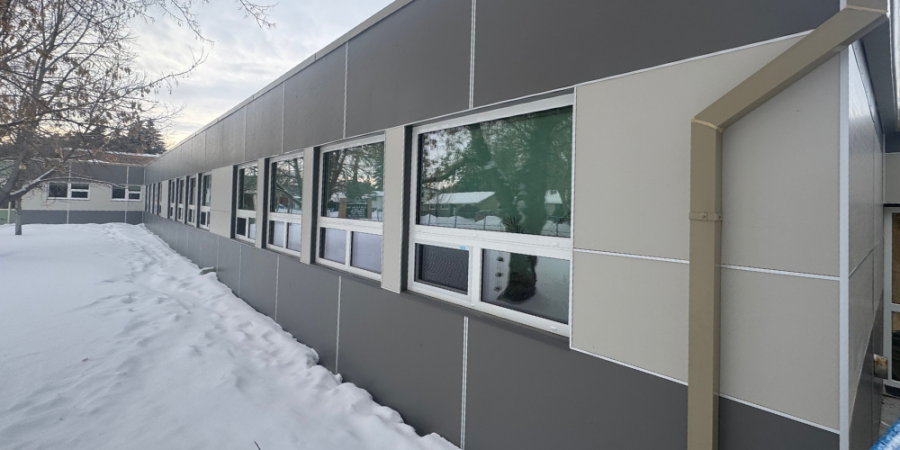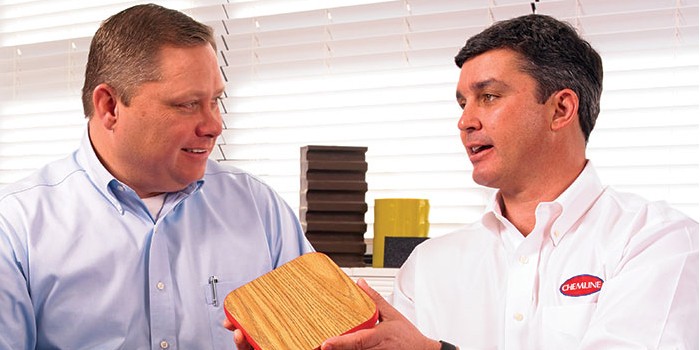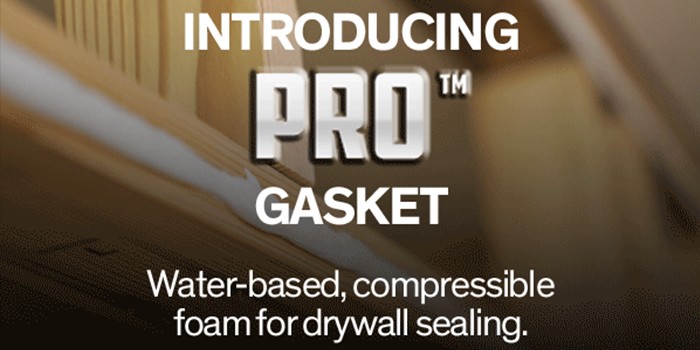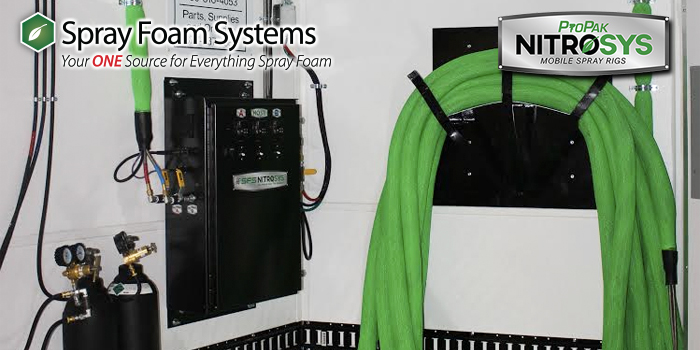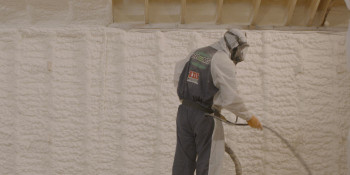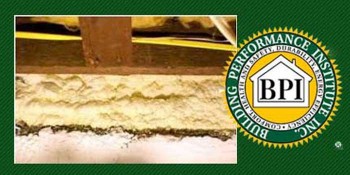One Foam to Rule Them All
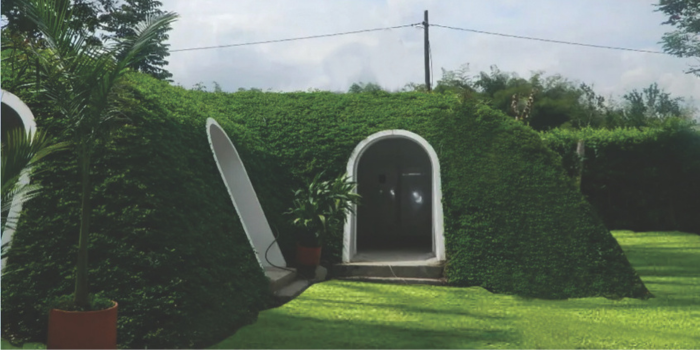

Spray Foam Magazine – Spring 2025 – A hobbit-hole: the phrase alone conjures images of cozy, earth-sheltered dwellings, warm hearths, and hearty meals. As Tolkien famously described, a proper hobbit-hole is a place of comfort, and is not “a nasty, dirty, wet hole, filled with the ends of worms and an oozy smell.” But living comfortably in an earth-sheltered home requires the right materials and construction techniques, without which a hobbit home can quickly turn from cozy retreat to moisture-riddled fiasco.
For one homeowner in New South Wales, Australia, the key to ensuring their underground dream home remained dry and energy efficient, lay in a critical decision—choosing spray foam insulation.
Enter Spray Foam Australia (SFA), who stepped up to the task using the high-performance AUSFOAM 30. AUSFOAM 30 is a low-density rigid polyurethane closed-cell foam system uniquely developed to provide a highly flame retarded foam insulation system.
A Quest for Comfort: The Project Begins
SFA, a division of Energy Efficiency Group based in Brisbane, is led by Group Director Devin Hall. When the general contractor for the hobbit home specified spray foam insulation, they reached out to Hall for a quote. Once the client approved the budget, SFA’s General Manager, Tim Delac, coordinated the finer details, such as reviewing project plans and site conditions with the field team led by Jackson Dunn.
The job would take Dunn and his crew, Jesse and Nhial, on a four-and-a-half-hour journey south to Newee Creek, New South Wales, a coastal region known for its high humidity and frequent rain. With their chemicals and equipment prepped and ready, they set out, mindful of the ever-changing skies, and hopeful the rain would stay at bay.
The Science Behind the Storybook Home
Hobbit-style homes, much like Icelandic turf houses, are designed to blend into the landscape, with natural soil and grass covering the structure. The earth provides passive heating and cooling benefits via geothermal energy transfer. These qualities make hobbit-homes well-suited for hot climates like Australia.
However, moisture control is a major challenge in all underground or earth-sheltered dwellings. Without proper insulation and sealing, condensation and mold can wreak havoc. Because so much can go awry with these types of homes, they can be difficult to insure and even more difficult to secure mortgage or construction loans for. A knowledgeable contractor can be an invaluable guide to navigating the process of spec’ing out the right materials, from its frame to its insulation.
The home’s metal exterior was an obvious choice given its structural integrity, since it can easily support the weight of the soil above, along with any grass or vegetation growing up top. But metal alone wasn’t enough to serve as a barrier to keep moisture, draftiness, and other natural yet unwanted elements out of the home. The builder needed an insulation solution that would create a vapor barrier and an energy-efficient seal. That’s where SPF came in.
“The foam was specified by the builder to ensure the house was watertight,” Hall explained, “For this sort of requirement, spray foam is definitely the optimal choice.”
Preparation: You Shall Not Skip Prep!
The team arrived at the job site around 10:30 am, eager to get to work. Since the client had arranged for SFA’s foam applicators to be the only trade on-site, they had the freedom to move about efficiently without interference.
With fewer obstructions, prep work was straightforward. Dunn and his team masked off necessary areas, such as the windows, with protective plastic to keep everything clean from overspray. Because the substrate was newly built and free of debris already, surface prep was minimal—an advantage they welcomed, given the locale’s tendency for unpredictable weather. Dunn was keen to start as soon as possible to stay ahead of any potential rainfall and keep the project on schedule.
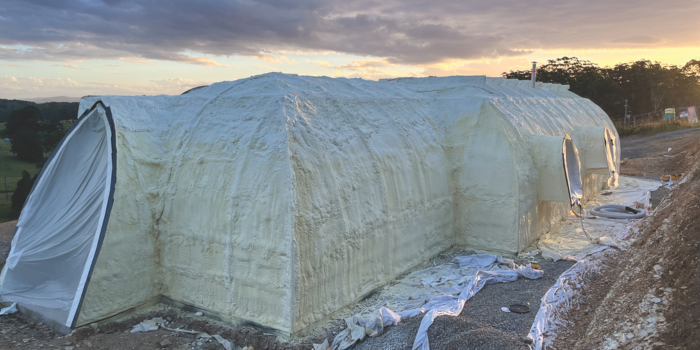
The home after SFA installed the foam AusFoam 30 system. The team hung protective plastic on the windows to guard against overspray.
The Fellowship of the Foam: Installation Process
Even though they were working outdoors in a well-ventilated area, safety remained a top priority. Before spraying, anyone working with or around the foam suited up in full PPE, including supplied air respirators with Sundström SR-99 filter units, full-face mask protection, disposable gloves, and coveralls.
They fired up the E-30 Reactor, then applied 100mm (approximately four inches) of AUSFOAM 30 closed-cell spray foam directly to the home’s metal exterior walls and roof. They worked carefully, minding the home’s curvature and aiming for a smooth, even application.
Despite the building’s unique geometry, the dome shape posed little challenge to the foam’s application once the sprayers got the hang of it. The AUSFOAM 30 adhered seamlessly to the home’s curved metal surface and allowed for complete coverage.
The team even found that the structure’s rounded shape worked to their advantage, as they could stand atop the dome’s roof to spray and stabilize their ladders against the sides of the dome to reach more challenging areas. Over the course of three days, they successfully installed more than 250 square meters (2,700 square feet) of SPF to the exterior.
“We insulated the entirety of the ceilings and walls, ensuring comprehensive protection and durability across the dome structure,” said Dunn, reflecting on a job well-done.
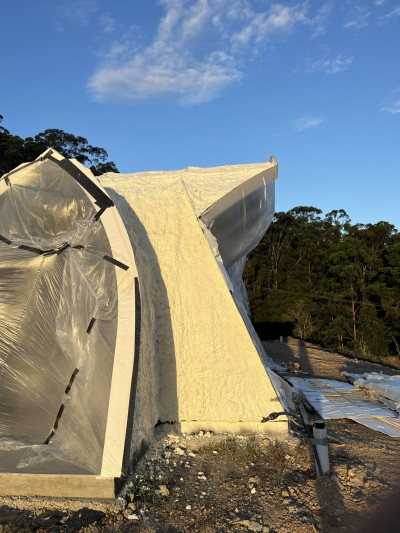
The post-foam home from different angles.
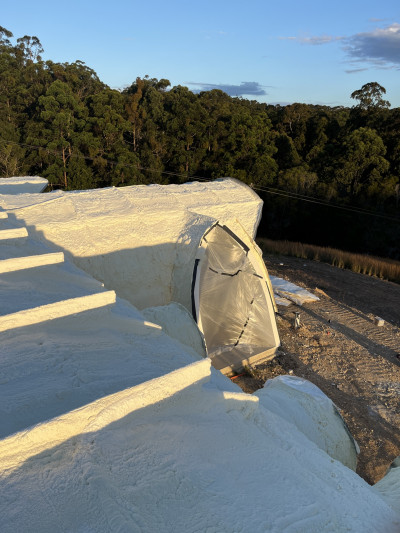
There and Back Again: Finishing Up
Once the foam was set and in place, the project’s general contractor installed a waterproof membrane over top, adding an extra layer of defense against moisture. Together, the closed-cell SPF and the membrane created a fortress-like barrier, ensuring the home would stay both dry and structurally sound for years to come.
With the expertise of SFA and the help of AUSFOAM 30, the homeowner wouldn’t have to worry about surprise leaks during the rainy season and could rest easy knowing worms and dirt wouldn’t be able to ooze their way through the protective foam encapsulating their home.
Fortune smiled upon the foaming crew, as the unpredictable coastal weather held steady all throughout the job. “We managed to get through the entire job without any moisture issues, which was very lucky as the house is located in a region that experiences a lot of rain!” Dunn noted.
With the insulation complete, the home was now primed to embody all the best elements of a hobbit-hole—whimsical, energy-efficient, and naturally cooled, without the pitfalls of moisture and mold to taint the storybook ending. In Tolkien’s Middle-earth, it might be ancient magic that keeps a hobbit’s earthen home warm and dry, but here in the real world, sometimes it’s simply the power of spray polyurethane foam.
Published by Spray Foam Magazine
SprayFoam / Spray Foam Insulation
Disqus website name not provided.





